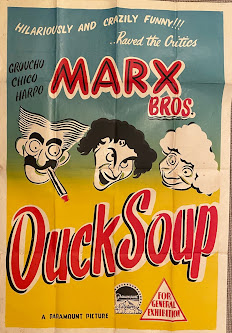 The Supreme Court’s decision in J.D.B. v. North Carolina provides the latest window into the troubled world of juvenile interrogations. The Court ruled that police questioning of a thirteen-year-old boy about residential robberies, without giving the famous Miranda warnings or allowing him to call his grandmother, may have rendered his confession inadmissible. If he in fact should reasonably have felt “free to leave” then the questioning was not custodial, and the Miranda warnings need not have been given. However, the Court said that the trial judge should have examined whether his age was a factor when deciding whether he should have actually felt free to leave. He was in a classroom with the door closed and school officials present, not in an interrogation room in a police station.
The Supreme Court’s decision in J.D.B. v. North Carolina provides the latest window into the troubled world of juvenile interrogations. The Court ruled that police questioning of a thirteen-year-old boy about residential robberies, without giving the famous Miranda warnings or allowing him to call his grandmother, may have rendered his confession inadmissible. If he in fact should reasonably have felt “free to leave” then the questioning was not custodial, and the Miranda warnings need not have been given. However, the Court said that the trial judge should have examined whether his age was a factor when deciding whether he should have actually felt free to leave. He was in a classroom with the door closed and school officials present, not in an interrogation room in a police station.But the Court described how a thirteen-year-old might very well not feel free to leave under the circumstances. The thirteen-year-old confessed in thirty to forty-five minutes. He was told he could not call his grandmother, his legal guardian, and that he would end up in juvenile detention. The Court called it a “commonsense reality” that juveniles should be treated differently because, as the Court has recognized in many other opinions dealing with punishment of juveniles, they are more “vulnerable” and “susceptible to outside pressures than adults.”
Not only are juvenile interrogations under-regulated, in a juvenile justice system that makes a fetish of confession, but false confessions are a deep concern. Reliable answers should not be expected when vulnerable young people are interrogated using high-pressure psychological techniques. Juveniles are more impulsive than adults and also more likely to comply with what they know authority figures want to hear, even when they are innocent. In my work, I have described how almost one-third of the false confessions brought to light by post-conviction DNA testing were by innocent juveniles.There are high-profile examples, like the false confessions of five youths in the Central Park jogger case and the confessions in the Ford Heights Four case, but also many less well-known examples that have come to light over the years, and ongoing litigation over cases (like those of the Dixmoor Five and the Englewood Five) in which DNA has called into question confessions by entire groups of juveniles.
Justice Sonia Sotomayor wrote the majority decision, which quoted the Court’s ruling in Corley v. United States, noting that interrogations “can induce a frighteningly high percentage of people to confess to crimes they never committed.” The majority importantly cited to work by research on juvenile false confessions, citing an amicus brief (which I should note, I joined) submitted by the Center on Wrongful Convictions of Youth that collected empirical studies that “illustrate the heightened risk of false confessions from youth.”
Of course, juveniles typically waive their Miranda rights after the warnings are given. The dissenters, fearing an erosion or complication of Miranda doctrine, may have little to worry about. Indeed, the Court noted, but did not address here, that there is a separate (but important) question whether juveniles can always be expected to understand the Miranda warnings when they are given. Perhaps far more important will be the implications of the Court’s approach on efforts to improve police practices. Police should know that not only will courts consider the age of the suspect when considering whether they are in custody, but that it will continue to play an important role in the voluntariness analysis. If police do not use less harsh techniques on juveniles, and do not make sure to record their interrogations to document their work accurately, they will face challenges that will undermine their efforts to investigate crime. Police should treat juveniles more carefully. Police trainers recommend interrogating juveniles differently than adults, but police practice is far from uniform. Many police use the same heavy-handed tactics on juveniles that they use on adults. The Court’s latest decision underscores the importance of more carefully scrutinizing how we treat juveniles during interrogations.
Brandon L. Garrett is a professor at The University of Virginia School of Law.






0 comments :
Post a Comment